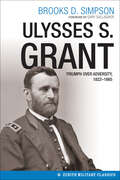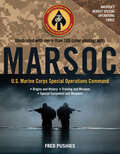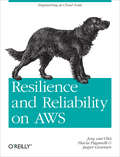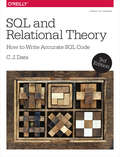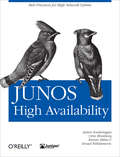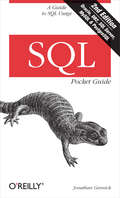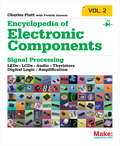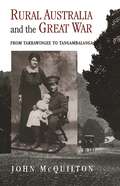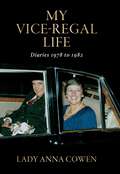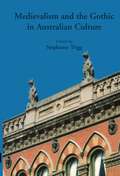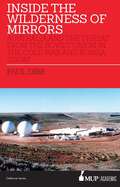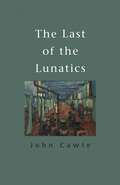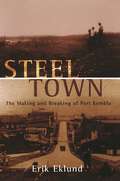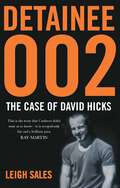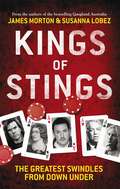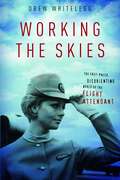- Table View
- List View
Ulysses S. Grant: Triumph over Adversity, 1822–1865 (Civil War America Ser.)
by Brooks D. Simpson“The best study of Grant’s military career since Bruce Catton’s two volumes. . . . The best treatment of Union military command and strategy now in print.” —The New RepublicMany modern historians have painted Ulysses S. Grant as a butcher, a drunk, and a failure as president. Others have argued the exact opposite and portray him with saintlike levels of ethic and intellect.In Ulysses S. Grant: Triumph over Adversity 1822–1865, historian Brooks D. Simpson takes neither approach, recognizing Grant as a complex and human figure with human faults, strengths, and motivations. Simpson offers a balanced and complete study of Grant from birth to the end of the Civil War, with particular emphasis on his military career and family life and the struggles he overcame in his unlikely rise from unremarkable beginnings to his later fame as commander of the Union Army. Chosen as a New York Times Notable Book upon its original publication, Ulysses S. Grant is a readable, thoroughly researched portrait that sheds light on this controversial figure.“[An] eminently informed and finely balanced portrait of Ulysses S. Grant as man, husband, failed entrepreneur and shrewd, victorious general. Simpson . . . uses carefully excavated facts and anecdotes to reveal an individual far more complex than the caricature . . . handed down to us by popular history. At the same time, Simpson does not gloss over Grant’s shortcomings. Although a fan of the general’s, Simpson is not in the business of writing apologetics, and therein lies his strength.” —Publishers Weekly “Persuasively explains the complexities and seeming contradictions of his subject’s character and genius.” —Library Journal“Skillfully written. . . . Simpson, who has benefited from decades of Civil War study, wears his wide-ranging scholarship lightly. Guaranteed to enlighten and please.” —Kirkus Reviews“Simpson has done a masterly job. . . . He has given us a detailed and exciting narrative of how one man succeeded, where so many others had failed.” —The New York Times Book Review
Changing Minds or Changing Channels?: Partisan News in an Age of Choice (Chicago Studies in American Politics)
by Martin Johnson Kevin ArceneauxWe live in an age of media saturation, where with a few clicks of the remote—or mouse—we can tune in to programming where the facts fit our ideological predispositions. But what are the political consequences of this vast landscape of media choice? Partisan news has been roundly castigated for reinforcing prior beliefs and contributing to the highly polarized political environment we have today, but there is little evidence to support this claim, and much of what we know about the impact of news media come from studies that were conducted at a time when viewers chose from among six channels rather than scores.Through a series of innovative experiments, Kevin Arceneaux and Martin Johnson show that such criticism is unfounded. Americans who watch cable news are already polarized, and their exposure to partisan programming of their choice has little influence on their political positions. In fact, the opposite is true: viewers become more polarized when forced to watch programming that opposes their beliefs. A much more troubling consequence of the ever-expanding media environment, the authors show, is that it has allowed people to tune out the news: the four top-rated partisan news programs draw a mere three percent of the total number of people watching television.Overturning much of the conventional wisdom, Changing Minds or Changing Channels? demonstrate that the strong effects of media exposure found in past research are simply not applicable in today’s more saturated media landscape.
MARSOC: U.S. Marine Corps Special Operations Command
by Fred PushiesAn illustrated profile of the Marine Corps component of USSOCOM, its origins & history, training & missions, and special equipment & weapons.The United States Marine Corps has a rich tradition of special operations, from World War II’s famed Marine Raiders and Para Marines to Korea and Vietnam’s legendary Marine Force Recon companies. Indeed, when Navy underwater demolition teams, the direct predecessors to the SEALs, performed the preinvasion reconnaissance of Iwo Jima, recon Marines were part of the mission. But when US Special Operations Command (USSOCOM) was created in 1987 in the wake of the abortive Desert One hostage rescue mission, the Marines did not join in. Spec ops on land, sea, and air were covered by the Army, Navy, and Air Force; the Corps felt it needed to keep its top warriors with its conventional forces.In the post-9/11 world, however, the need for special operations forces dramatically increased. With the creation of the Marine Special Operations Command (MARSOC) in 2006, Marines officially become part of USSCOM. Initially drawn from the ranks of Force Recon companies, these highly skilled and combat-proven Leathernecks joined their spec ops brethren in taking the war to al-Qaeda and the Taliban in America’s global war on terrorism.MARSOC’s mission is to win wars before they begin, taking combat beyond the frontlines. When America needs to respond to aggression in distant lands, the call comes to send in the Marines. With the creation of MARSOC, chances are special operations Marines are already there.
The Best Homemade Kids' Lunches on the Planet: Make Lunches Your Kids Will Love with More Than 200 Deliciously Nutritious Meal Ideas
by Laura FuentesMake sure your child eats healthy all day long with more than two hundred quick and nutritious breakfast and lunch recipes—including allergen-free options!Making lunches at home is a great way to keep your children healthy. With delicious meals made from natural ingredients, you’ll know your little ones are getting the nutrition they need for their growing brains and bodies. Full of recipes to suit every age and stage, The Best Homemade Kids’ Lunches on the Planet shows you how easy it is to prepare food that’ll be the envy of the lunch table. This easy-to-use cookbook features 200+ adorable and inspiring recipes for breakfasts on the go, healthy sandwiches, portable hot lunches, and more—plus entire lunchbox meals that are gluten-, soy-, and/or nut-free.
Resilience and Reliability on AWS: Engineering at Cloud Scale
by Jurg Van Vliet Flavia Paganelli Jasper GeurtsenCloud services are just as susceptible to network outages as any other platform. This concise book shows you how to prepare for potentially devastating interruptions by building your own resilient and reliable applications in the public cloud. Guided by engineers from 9apps—an independent provider of Amazon Web Services and Eucalyptus cloud solutions—you’ll learn how to combine AWS with open source tools such as PostgreSQL, MongoDB, and Redis.This isn’t a book on theory. With detailed examples, sample scripts, and solid advice, software engineers with operations experience will learn specific techniques that 9apps routinely uses in its cloud infrastructures.Build cloud applications with the "rip, mix, and burn" approachGet a crash course on Amazon Web ServicesLearn the top ten tips for surviving outages in the cloudUse elasticsearch to build a dependable NoSQL data storeCombine AWS and PostgreSQL to build an RDBMS that scales wellCreate a highly available document database with MongoDB Replica Set and SimpleDBAugment Redis with AWS to provide backup/restore, failover, and monitoring capabilitiesWork with CloudFront and Route 53 to safeguard global content delivery
HTML and XHTML Pocket Reference
by Jennifer Niederst RobbinsAfter years of using spacer GIFs, layers of nested tables, and other improvised solutions for building your web sites, getting used to the more stringent "standards-compliant" design that is de rigueur among professionals today can be intimidating.With standards-driven design, keeping style separate from content is not just a possibility but a reality. You no longer use HTML and XHTML as design tools, but strictly as ways to define the meaning and structure of web content. And Cascading Style Sheets (CSS) are no longer just something interesting to tinker with, but a reliable method for handling all matters of presentation, from fonts and colors to page layout. When you follow the standards, both the site's design and underlying code are much cleaner. But how do you keep all those HTML and XHTML tags and CSS values straight? Jennifer Niederst-Robbins, the author of our definitive guide on standards-compliant design, Web Design in a Nutshell, offers you the perfect little guide when you need answers immediately: HTML and XHTML Pocket Reference. This revised and updated new edition takes the top 20% of vital reference information from her Nutshell book, augments it judiciously, cross-references everything, and organizes it according to the most common needs of web developers. The result is a handy book that offers the bare essentials on web standards in a small, concise format that you can use carry anywhere for quick reference. This guide will literally fit into your back pocket.Inside HTML and XHTML Pocket Reference, you'll find instantly accessible alphabetical listings of every element and attribute in the HTML 4.01 and XHTML 1.0 Recommendations. This is an indispensable reference for any serious web designer, author, or programmer who needs a fast on-the-job resource when working with established web standards.
Understanding the Linux Kernel: From I/O Ports to Process Management
by Daniel P. Bovet Marco CesatiIn order to thoroughly understand what makes Linux tick and why it works so well on a wide variety of systems, you need to delve deep into the heart of the kernel. The kernel handles all interactions between the CPU and the external world, and determines which programs will share processor time, in what order. It manages limited memory so well that hundreds of processes can share the system efficiently, and expertly organizes data transfers so that the CPU isn't kept waiting any longer than necessary for the relatively slow disks.The third edition of Understanding the Linux Kernel takes you on a guided tour of the most significant data structures, algorithms, and programming tricks used in the kernel. Probing beyond superficial features, the authors offer valuable insights to people who want to know how things really work inside their machine. Important Intel-specific features are discussed. Relevant segments of code are dissected line by line. But the book covers more than just the functioning of the code; it explains the theoretical underpinnings of why Linux does things the way it does.This edition of the book covers Version 2.6, which has seen significant changes to nearly every kernel subsystem, particularly in the areas of memory management and block devices. The book focuses on the following topics:Memory management, including file buffering, process swapping, and Direct memory Access (DMA) The Virtual Filesystem layer and the Second and Third Extended FilesystemsProcess creation and schedulingSignals, interrupts, and the essential interfaces to device driversTimingSynchronization within the kernelInterprocess Communication (IPC) Program executionUnderstanding the Linux Kernel will acquaint you with all the inner workings of Linux, but it's more than just an academic exercise. You'll learn what conditions bring out Linux's best performance, and you'll see how it meets the challenge of providing good system response during process scheduling, file access, and memory management in a wide variety of environments. This book will help you make the most of your Linux system.
SQL and Relational Theory: How to Write Accurate SQL Code
by C. J. DateSQL is full of difficulties and traps for the unwary. You can avoid them if you understand relational theory, but only if you know how to put that theory into practice. In this book, Chris Date explains relational theory in depth, and demonstrates through numerous examples and exercises how you can apply it to your use of SQL.This third edition has been revised, extended, and improved throughout. Topics whose treatment has been expanded include data types and domains, table comparisons, image relations, aggregate operators and summarization, view updating, and subqueries. A special feature of this edition is a new appendix on NoSQL and relational theory.Could you write an SQL query to find employees who have worked at least once in every programming department in the company? And be sure it’s correct?Why is proper column naming so important?Nulls in the database cause wrong answers. Why? What you can do about it?How can image relations help you formulate complex SQL queries?SQL supports "quantified comparisons," but they’re better avoided. Why? And how?Database theory and practice have evolved considerably since Codd first defined the relational model, back in 1969. This book draws on decades of experience to present the most up to date treatment of the material available anywhere. Anyone with a modest to advanced background in SQL can benefit from the insights it contains. The book is product independent.
JUNOS High Availability: Best Practices for High Network Uptime (Animal Guide)
by James Sonderegger Orin Blomberg Kieran Milne Senad PalislamovicWhether your network is a complex carrier or just a few machines supporting a small enterprise, JUNOS High Availability will help you build reliable and resilient networks that include Juniper Networks devices. With this book's valuable advice on software upgrades, scalability, remote network monitoring and management, high-availability protocols such as VRRP, and more, you'll have your network uptime at the five, six, or even seven nines -- or 99.99999% of the time.Rather than focus on "greenfield" designs, the authors explain how to intelligently modify multi-vendor networks. You'll learn to adapt new devices to existing protocols and platforms, and deploy continuous systems even when reporting scheduled downtime. JUNOS High Availability will help you save time and money. Manage network equipment with Best Common PracticesEnhance scalability by adjusting network designs and protocolsCombine the IGP and BGP networks of two merging companiesPerform network auditsIdentify JUNOScripting techniques to maintain high availabilitySecure network equipment against breaches, and contain DoS attacksAutomate network configuration through specific strategies and toolsThis book is a core part of the Juniper Networks Technical Library™.
Building Modular Cloud Apps with OSGi: Practical Modularity with Java in the Cloud Age
by Paul Bakker Bert ErtmanIf you’re an experienced Java developer in the enterprise, this practical, hands-on book shows you how to use OSGi to design, develop, and deploy modular cloud applications. You’ll quickly learn how to use OSGi, through concise code examples and a set of best practices derived from the authors’ experiences with real-world projects.Through the course of this book, you’ll learn to develop modern web applications with tools and techniques such as RESTful Web Services, NoSQL, provisioning, elasticity, Auto Scaling, hotfixes, and automatic failover. Code samples are available from GitHub.Work with dynamic OSGi services to create modular applicationsExplore the basics of OSGi bundles and modular application designLearn advanced topics, including semantic versioning, integration testing, and configuring componentsUnderstand OSGi pitfalls, anti-patterns, and features you should avoidCreate a modular architecture for cloud-based web applicationsDiscover how maintainability, extensibility, scalability, and testability are affected by modular designGet a look at various options for creating web applications with a modular approachInteract with persistent storage services, including relational databases and NoSQLExamine alternatives for deploying modular applications to the cloud
SQL Pocket Guide
by Jonathan GennickSQL is the language of databases. It's used to create and maintain database objects, place data into those objects, query the data, modify the data, and, finally, delete data that is no longer needed. Databases lie at the heart of many, if not most business applications. Chances are very good that if you're involved with software development, you're using SQL to some degree. And if you're using SQL, you should own a good reference or two. Now available in an updated second edition, our very popular SQL Pocket Guide is a major help to programmers, database administrators, and everyone who uses SQL in their day-to-day work. The SQL Pocket Guide is a concise reference to frequently used SQL statements and commonly used SQL functions. Not just an endless collection of syntax diagrams, this portable guide addresses the language's complexity head on and leads by example. The information in this edition has been updated to reflect the latest versions of the most commonly used SQL variants including:Oracle Database 10g, Release 2 (includingthe free Oracle Database 10g Express Edition (XE))Microsoft SQL Server 2005MySQL 5IBM DB2 8.2PostreSQL 8.1 database
Planes, Gliders and Paper Rockets: Simple Flying Things Anyone Can Make--Kites and Copters, Too!
by James Floyd Kelly Rick SchertleDo helicopters need more or less energy to stay in the sky than an airplane? What pushes a rocket to leave the atmosphere? Why can airplanes have smaller motors than helicopters? Help your students learn the answers to these and other questions! Written for educators, homeschoolers, parents--and kids!--this fully illustrated book provides a fun mix of projects, discussion materials, instructions, and subjects for deeper investigation around the basics of homemade flying objects. With the projects in this book, you can spend more time learning and experimenting, and less time planning and preparing. Complete with download links to PDF templates that expand your teaching, this is your one-stop manual for learning about, interacting with, and being curious about airflow, gravity, torque, power, ballistics, pressure, and force. In Make: Planes, Gliders, and Paper Rockets, you'll make and experiment with: Paper catapult helicopter--add an LED light for night launches!Pull-string stick helicopterRubber band airplaneSimple sled kite25-cent quick-build kiteAir rockets with a parachute or a gliderFoam air rocketRocket standsBounce rocketLow- and high-pressure rocket launchers
Encyclopedia of Electronic Components Volume 2: LEDs, LCDs, Audio, Thyristors, Digital Logic, and Amplification
by Charles Platt Fredrik JanssonWant to know how to use an electronic component? This second book of a three-volume set includes key information on electronics parts for your projects--complete with photographs, schematics, and diagrams. You'll learn what each one does, how it works, why it's useful, and what variants exist. No matter how much you know about electronics, you'll find fascinating details you've never come across before.Perfect for teachers, hobbyists, engineers, and students of all ages, this reference puts reliable, fact-checked information right at your fingertips--whether you're refreshing your memory or exploring a component for the first time. Beginners will quickly grasp important concepts, and more experienced users will find the specific details their projects require.Volume 2 covers signal processing, including LEDs, LCDs, audio, thyristors, digital logic, and amplification.Unique: the first and only encyclopedia set on electronic components, distilled into three separate volumesIncredibly detailed: includes information distilled from hundreds of sourcesEasy to browse: parts are clearly organized by component typeAuthoritative: fact-checked by expert advisors to ensure that the information is both current and accurateReliable: a more consistent source of information than online sources, product datasheets, and manufacturer's tutorialsInstructive: each component description provides details about substitutions, common problems, and workaroundsComprehensive: Volume 1 covers power, electromagnetism, and discrete semiconductors; Volume 2 includes LEDs, LCDs, audio, thyristors, digital logic, and amplification; Volume 3 covers a range of sensing devices.
Writing and Querying MapReduce Views in CouchDB: Tools for Data Analysts
by Bradley HoltIf you want to use CouchDB to support real-world applications, you'll need to create MapReduce views that let you query this document-oriented database for meaningful data. With this short and concise ebook, you'll learn how to create a variety of MapReduce views to help you query and aggregate data in CouchDB’s large, distributed datasets.You'll get step-by-step instructions and lots of sample code to create and explore several MapReduce views through the course of the book, using an example database you construct. To work with these different views, you’ll learn how to use the Futon web administration console and the cURL command line tool that come with CouchDB.Learn how the Map and Reduce steps work independently and together to index your dataUse the example database to create several temporary views based on different criteriaDiscover the uses of Map and Reduce JavaScript functionsConvert your temporary views to permanent views within a design documentLearn several options for querying the data within your viewsLimit the number of results returned, skip some results, or reverse the order of the outputGroup your results by exact keys or by parts of keysBradley Holt, co-founder of the creative services firm Found Line, is a web developer and entrepreneur ten years of PHP and MySQL experience. He began using CouchDB before the release of version 1.0. Bradley is an active member of the PHP community, and can be reached at bradley-holt.com.
London
by Tanya DalziellJoan London's remarkable body of work, including the award-winning novels and short fiction The Golden Age, Gilgamesh and Sister Ships, tells everyday stories of family, love and loss, with her signature poetic vision. London's stories portray how ordinary people get caught up in extraordinary circumstances and come to live in a world of violence and fear, of beauty and hope. In London Tanya Dalziell takes the reader through the literary career of the Western Australian living treasure, journeying through space and time to offer a unique insight into the development of Australian literature and women's writing across the past four decades. London engages deeply with Joan London's work to reflect on its artistry and the conversations it provokes with the changing times. Dalziell invites readers to traverse London's writing and discover the significant contributions she has made to the contemporary literary landscape.
Rural Australia and the Great War: From Tarrawingee to Tangambalanga
by John McQuiltonIn the cities and in the countryside of Australia, the Great War of 1914 - 1918 marched to somewhat different tempos. John McQuilton evokes the wartime experience of all rural Australians by capturing the moods of the country towns and hamlets of North Eastern Victoria. Every aspect of the war - recruiting, fund-raising and, eventually, homecoming and the design of the war memorial - was marked by a mixture of small-minded local politics, heroism and sacrifice, and grief. Individuals, whether journalists, town councillors or leading local citizens, shaped the recurring battles on the home front. The conscription debates were particularly vicious, as the countryside exhausted its pool of volunteers long before the cities. In small communities the 'shirker' could not hide; everyone knew which families had sent men to the front, and who had genuine reasons for staying home. This intimacy worked in favour of the many German Australians: country people knew them as trusted neighbours, but in the cities they were reviled as enemy aliens. Rural Australia and the Great War is unique among writing on the First World War in creating a richly detailed picture of wartime in a particular part of country Australia. For country and city readers alike, this is fascinating social history.
My Vice-Regal Life: Diaries 1978 to 1982
by Lady Anna CowenSunday, 8 January 1978I have decided to keep a diary during Zelman's term of office as Governor-General. I am pleased, because I forget so much and the re-reading of a sentence brings whole occasions, scenes, and otherwise forgotten things, vividly back to mind...And so begins an extraordinary record of the life of a Governor-General's wife. Lady Anna Cowen's edited diaries capture the day-to-day life—the wardrobe fittings, the running of an enormous household—as well as the pomp and circumstance of vice-regal duties during the term Sir Zelman Cowen, the 'healing Governor-General', served after the dismissal by Sir John Kerr of the Whitlam government.
Medievalism And The Gothic In Australian Culture
by Stephanie TriggThis collection opens up a new field of academic and general interest: Australian medievalism. That is, the heritage and continuing influence of medieval and gothic themes, ideas and cultural practices. Geographically removed from Europe, and distinguished by its eighteenth-century colonial settlement, Australia is a fascinating testing-ground on which to explore the cultural residues of medieval and gothic tradition. These traditions take a distinctive form, once they have been 'transported' to a different topographical setting, and a cultural context whose relationship with Europe has always been dynamic and troubled. Early colonists attempted to make the unfamiliar landscape of Australia familiar by inscribing it with European traditions: since then, a diverse range of responses and attitudes to the medieval and gothic past have been played out in Australian culture, from traditional forms of historical reconstruction through to playful postmodernist pastiche. These essays examine the early narratives of Australian 'discovery' and the settlement of what was perceived as a hostile, gothic environment; exercises of medieval revivalism and association consonant with the British nineteenth-century rediscovery of chivalric ideals and aesthetic, spiritual and architectural practices and models; the conscious invocation and interrogation of medieval and gothic tropes in Australian fiction and poetry, including children's literature; the transformation of those tropes in fantasy, role-playing games and subcultural groups; and finally, the implication of the medieval past for discussions of Australian nationalism.
Inside the Wilderness of Mirrors: Australia and the threat from the Soviet Union in the Cold War and Russia today
by Paul DibbThroughout the Cold War Paul Dibb worked with the highest levels of Australian and American intelligence, and was one of very few Australian officials to be given the top-secret security clearance for access to Pine Gap. Only the most senior intelligence officers in both the US and Australia held this clearance—and even then on a strict 'need to know' basis. Inside the Wilderness of Mirrors is Paul's unique insight into how Australia saw the threat from the Soviet Union during the Cold War era and beyond. This insider's account of Australian defence strategy reveals the crucial importance of the US-Australian base at Pine Gap and why Moscow targeted it for nuclear attack, and how it felt to be an expert on the Soviet Union at a time when those who dared to study the Soviet Union were necessarily subject to suspicion from their Australian colleagues. Inside the Wilderness of Mirrors concludes by examining the ways in which contemporary Russia presents a continuing threat to the international order.
Last Of The Lunatics
by John CawteJohn Cawte looks back in amazement to his years as a young doctor in an Australian madhouse. He now recognises the people he treated in the early 1950s as 'the last of the lunatics'. Anti-psychotic and anti-depressant drugs were unknown. Bursting asylums, housing an uproar of insanity, were wastelands of stigma and dread. 'Management' techniques ranged from straitjackets and padded cells to isolation and primitive shock treatments. Miraculously, Cawte's case notes were saved from destruction. Rereading them after forty years, he was gripped by the horror they revealed and the questions they raised. Much has changed for the better. Many of the fearful illnesses he recorded have disappeared, treatments are vastly more effective and stigma has lessened. But his notes hold a surprising and challenging lesson—that temporary 'asylum' from the stresses of life is often all that a disturbed person needs for recovery. The Last of the Lunatics is rich and moving. The personal stories recorded by a perceptive young man have been filtered by experience and sharpened by telling literary references. Doctors, psychiatrists, those who remember and those who wonder about the human condition will be touched by this compassionate book.
Steel Town: The Making and Breaking of Port Kembla
by Eklund, ErikThe sun moves across the narrow coastal plain that borders the range to the north . . . It shows once separate places now merged into one suburban entity, a ribbon of residential, commercial and industrial development . . . There is a commercial centre whose tall metallic and glass structures reflect the light, and celebrate an industrial heritage. And to the south, an area where a mass of industrial buildings converge around a large harbour. This area stands as a telling symbol of the region's golden industrial age. To most Australians Port Kembla is a grimy, polluted, industrial wasteland located down the coast from Sydney. Such images were formed over fifty years ago when industrial development in the town was at its height, and when the expanse of breathtaking coast had been colonised by the stacks and furnaces of heavy industry. Yet the vision of stacks and pollution from furnaces was never the whole story—there was always more to Port Kembla. Although these ideas persist even today, they obscure the real experiences of the people of the port. Steel Town illuminates our understanding of the processes of industrial and social change. Port Kembla was unique in Australian terms—an urban environment where industrial society shaped local life and politics like nowhere else. This book explores the advent and implications of industrial society—and the impact of economic decline and deindustrialisation. In his comprehensive and persuasive account of local life Erik Eklund draws together themes of migration, gender, class and identity. Using archival records, oral history interviews and company documents, Steel Town charts the relationship between economic change and the human experience of that change. The story of Port Kembla is the story of the 'big issues' of Australian history writ small on the lives of three generations of local people. The legacy of industrial society is a mixed one; its experiences and consequences are full of contradictions. And that, of course, is the beauty of history.
Detainee 002: The Case of David Hicks
by Leigh SalesIn a remote American military base at Guantanamo Bay, 385 enemy combatants sit waiting for their day in court. Among them is David Hicks, who was detained for five years until the March 2007 hearing where he pleaded guilty to the charge of providing material support for terrorism. Detainee 002 reveals in unprecedented detail how an Australian citizen wound up in the War on Terror. Based on more than five years of reporting and dozens of interviews with insiders, Leigh Sales explains the intricacies of Hicks's case, from his capture in Afghanistan, to life in Guantanamo Bay, to the behind-the-scene establishment and workings of the military commissions. Sales' impeccable research takes us from top-secret negotiations at the White House and Pentagon to the domestic fallout Hicks's incarceration has had on his family, to the campaign that Major Michael Mori, the marine who becomes his greatest advocate, waged on his behalf. David Hicks's case is emblematic of some of the greatest challenges facing the world today: the rise of Islamic extremism, terrorism and the accountability of governments towards their citizens. It is a chilling reminder that, in a war with ever-changing rules and no end in sight, there are no limits.
Kings Of Stings
by James Morton Susanna LobezDo you want to...Help distribute money to the poor and be given a fee to do so? Share in Al Qaeda's hidden gold? Help a young girl orphaned in the tsunami? In their highly entertaining and often shocking new book James Morton and Susanna Lobez follow up their bestselling Gangland Australia by delving into the world of Australian con artists such as Mario Condello, Helen Demidenko, Christopher Skase, Brenton Jarrett, Peter Foster, Lola Montez and Fairlie Arrow. Here are highly talented men and women and their tricks: changing paper into banknotes, selling other people's property, faking deaths, and forging paintings; promising miracle cures and impersonating aristocracy, preachers, military gents, lawyers and doctors. In fact, whatever it takes to separate the unwary from their money. Read about the scams and think twice about that offer that seems almost too good to be true.
Interracial Encounters: Reciprocal Representations in African and Asian American Literatures, 1896-1937 (American Literatures Initiative #2)
by Julia H. Lee2013 Honorable Mention, Asian American Studies Association's prize in Literary Studies Part of the American Literatures Initiative SeriesWhy do black characters appear so frequently in Asian American literary works and Asian characters appear in African American literary works in the early twentieth century? Interracial Encounters attempts to answer this rather straightforward literary question, arguing that scenes depicting Black-Asian interactions, relationships, and conflicts capture the constitution of African American and Asian American identities as each group struggled to negotiate the racially exclusionary nature of American identity. In this nuanced study, Julia H. Lee argues that the diversity and ambiguity that characterize these textual moments radically undermine the popular notion that the history of Afro-Asian relations can be reduced to a monolithic, media-friendly narrative, whether of cooperation or antagonism. Drawing on works by Charles Chesnutt, Wu Tingfang, Edith and Winnifred Eaton, Nella Larsen, W.E.B. Du Bois, and Younghill Kang, Interracial Encounters foregrounds how these reciprocal representations emerged from the nation’s pervasive pairing of the figure of the “Negro” and the “Asiatic” in oppositional, overlapping, or analogous relationships within a wide variety of popular, scientific, legal, and cultural discourses. Historicizing these interracial encounters within a national and global context highlights how multiple racial groups shaped the narrative of race and national identity in the early twentieth century, as well as how early twentieth century American literature emerged from that multiracial political context.
Working the Skies: The Fast-Paced, Disorienting World of the Flight Attendant
by Drew WhiteleggGet ready for takeoff. The life of the flight attendant, a.k.a., stewardess, was supposedly once one of glamour, exotic travel and sexual freedom, as recently depicted in such films as Catch Me If You Can and View From the Top. The nostalgia for the beautiful, carefree and ever helpful stewardess perhaps reveals a yearning for simpler times, but nonetheless does not square with the difficult, demanding and sometimes dangerous job of today's flight attendants. Based on interviews with over sixty flight attendants, both female and male labor leaders, and and drawing upon his observations while flying across the country and overseas, Drew Whitelegg reveals a much more complicated profession, one that in many ways is the quintessential job of the modern age where life moves at record speeds and all that is solid seems up in the air.Containing lively portraits of flight attendants, both current and retired, this book is the first to show the intimate, illuminating, funny, and sometimes dangerous behind-the-scenes stories of daily life for the flight attendant. Going behind the curtain, Whitelegg ventures into first-class, coach, the cabin, and life on call for these men and women who spend week in and week out in foreign cities, sleeping in hotel rooms miles from home. Working the Skies also elucidates the contemporary work and labor issues that confront the modern worker: the demands of full-time work and parenthood; the downsizing of corporate America and the resulting labor lockouts; decreasing wages and hours worked; job insecurity; and the emotional toll of a high stress job. Given the events of 9/11, flight attendants now have an especially poignant set of stressful concerns to manage, both for their own safety as well as for those they serve, the passengers. Flight attendants, originally registered nurses charged with attending to passengers' medical needs, now find themselves wearing the hats of therapist, security guard and undercover agent. This last set of tasks pushing some, as Whitelegg shows, out of the business altogether.
